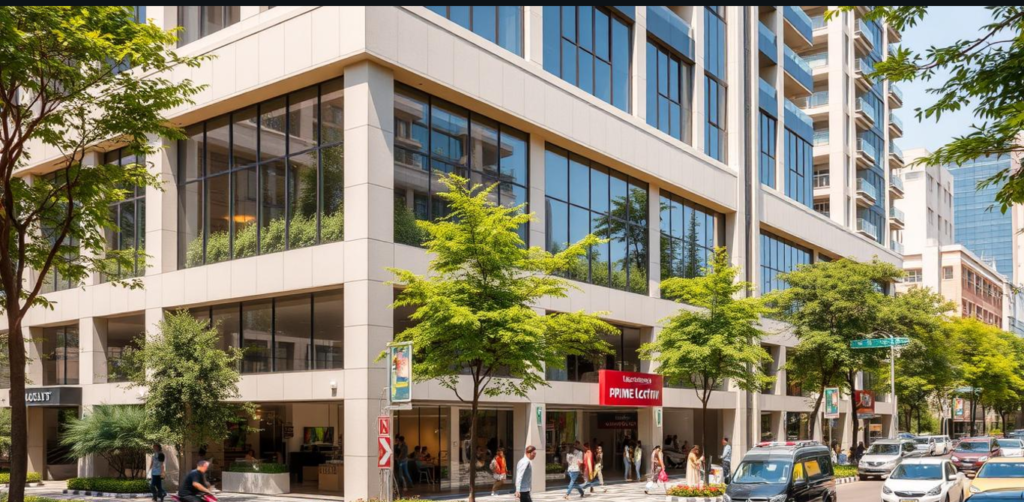What is a Flexible Office?
In recent years, companies have noticed that on a given working day, a large space of their office (desks, cubicles and meeting rooms) often remain unused. Employees may be on vacation, traveling for work, working remotely, or out sick. This means wastage of work areas.
All the companies regardless of the size are trying to come up with flexible office space. In the real estate industry, a flex space is one that can bear out various functions. It is an area that can be customized to serve more than one purpose, utilizing the space resource properly.
The term flex space is common for industrial space as it is extremely versatile and can be used for many businesses. This great getaway enables many businesses in the house as per their office requirements. It includes a mix of office , showroom and warehouse area. Businesses can configure these spaces to include air conditioned , storage zones, or client-facing areas—all within the same unit.
In simple terms, a flex office is an industrial warehouse that could be customized into a regular office space as well. Since it has both a store and a workspace, it can pretty much be used by any kind of business. Since the space can be flexed into any layout, it has given a fresh side to the real estate sector due to its adaptability.
Flex Office Space: A New Way of Working
As the workday begins and the employees show up at work, they make their way to the seats or the cubicles of their choice and spend their entire day working there. At the end of the day, they wrap up, pack their belongings or put them in the locker and leave the workspace clean for others to use it. With the right hygiene rules and dedicated cleaning staff, the same space can be used by multiple clients.
Although flex office spaces are usually not fully furnished (with furniture, internet, phone and meeting rooms), you are welcome to decorate the space as per your desire. It is a real evolution of workspaces underlining the transition from an ownership of space to economical use of it.
Businesses like how they can use a flexible space for both inventory facility and administrative work. Because of the flexible layout and neat design, the tenants can add or remove elements to scheme the space as per the plan for the required purpose. For instance, one can add important tools and machinery for active production and turn the place into a manufacturing unit. Similarly, one can decorate the area to display their products, say, a fashion brand. The space can be turned into a retail store, a lab or a creative corner however the client wishes to.
Advantages of Flex Office Space
- All departments under one roof: Many companies need a production house/warehouse in the same space with the admin department and other teams for better coordination. With flex office spaces, they can give their business the comfort and also provide employees a place to connect and collaborate with others.
- Location: Flexible office spaces are often located in office hubs making them easily accessible and attractive to clients.
- Space flexibility: Flexible office spaces can be tailor made to meet the specific needs of businesses as compared to traditional offices.
- Cost Effective: The initial cost of setting up a new business can be huge considering the assets, designs and facilities but with flexible offices, you only have to worry about the rent that would depend on the rental price of that particular area and the décor you wish in your space.
- Ceiling height: The ceiling height in a flexible office space is usually between 12 to 16 which is pretty much ideal for the workshop requirement and can also be transformed as needed.
- Scalability: Flexible offices enable your business to upscale or contract depending on the current situation. Needing further areas is not a problem and similarly winding up operations is just one phone call away.
- Encouraging Teamwork: Remote working is good, and work-from-home is comfortable, but they deprive you of the socialization and sense of community. The upside of working with a team needs better coordination and team building. A sense of belongingness and motivation is seen in those who work together.
- Flexible Contract: Global pandemic is proof that future can’t be predicted even for businesses. The nature of flexible office spaces allows you the freedom to opt out if the location is not working for you.
- Better creativity: As discussed, working alone can make you isolated and you can’t think of fresh ideas. Whereas, working with teammates helps you find a better vision and think creatively.
- Increased productivity: A collaborative space encourages the working of cross-functional teams and improves coordination.
Drawbacks of Flexible Office Space
- Ground floor only: Flexible offices are single-floor buildings which can be a highlighting point considering safety.
- Limited View: Flex office spaces are usually on the ground floor, the tenants would not have a very nice view from the office.
- Parking Challenges: The flexible spaces usually do not have an underground parking facility and it can be very inconvenient in bad weather specifically.
- Missing Amenities: Flexible office space does not offer some facilities like day-care, on-site dining room, lounge or game area, etc.
- Underestimating Space Requirements: The tenants generally underestimate the capacity of the workspace that tends to get overloaded due to wrong calculation.
Are Flexible Office Spaces Right for You?
Flexible office can be of great advantage to companies that wish to customize their workspace without overspending or carrying long lease agreements. The easy-to-adapt spaces can become your dream office with little adjustments. In uncertain times, businesses that use flex spaces can cut costs, improve employee experience and avoid future risks. If you wish to give your employees a good, productive, engaged and healthy work environment, flexible offices are the right deal for you!



